Spain's Abandoned Pyramid
Friday, June 27, 2025

Humanity has been characterized throughout history by building all kinds of buildings. With multiple purposes, among them, the adoration of divine figures or veneration of the leaders to achieve posterity.
Spain has countless places within its borders where there are authentic and magnificent buildings envied throughout the world. Every year thousands of tourists, both Spanish and foreign, decide to visit the most characteristic buildings of Spain, something that has led this country to be one of the leading nations in this area.
History or monuments are usually one of the main attractions of the country that, together with the sun and sand, make up a varied tourist offering. Spain also has thousands of places to visit if you are in search of unique curiosities, such as the fact that it is one of the nations with the largest number of World Heritage Sites.
Among all the wonders that the country hides, there is a singular building that has been abandoned since 1975. The Pyramid of the Italians is a unique structure in Spain that was built in 1939 to commemorate the combatants of the transalpine country in the Civil War.
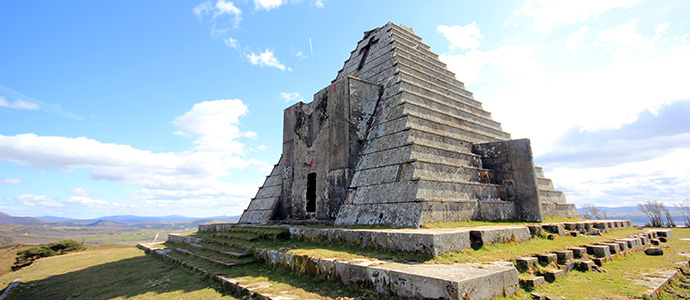
Although these buildings are rightfully very famous in other countries such as Egypt or Mexico, in Spain this type of construction only has one representation. Thanks to the help that Benito Mussolini gave Franco during the Civil War, the Spanish dictator decided to honour the Italians who fell in the war.
This construction of more than 20 meters in height has a typical pyramidal structure covered with limestone plates. It is located in Burgos, in the Valdebezana Valley, Castilla y León, where its structure stands out above the landscape due to its unique shape.
The pyramid was inaugurated on August 26 to commemorate the victory over the Republicans in the Battle of Santander. Franco had the pyramid built to honour the fallen soldiers in 1937 whose architect was the Italian Pietro Giovanni Bergaminio.
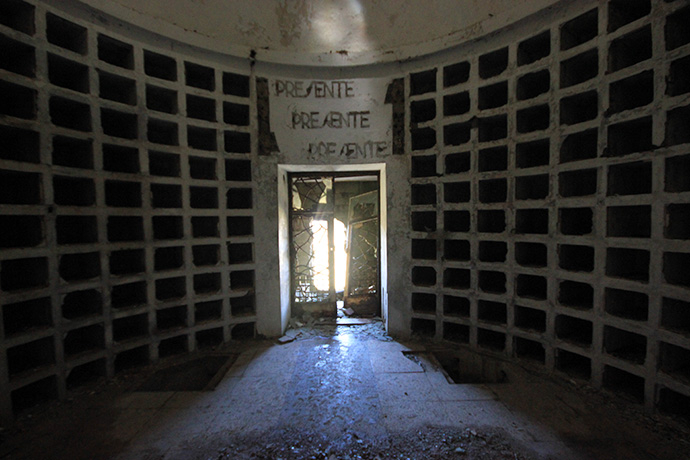
In the early years, the pyramid was used to shelter more than 300 Italian soldiers who fell in the war, although in 1975 the Italian government claimed the bodies. From that moment on, the construction has been empty, although some still commemorate those soldiers today.
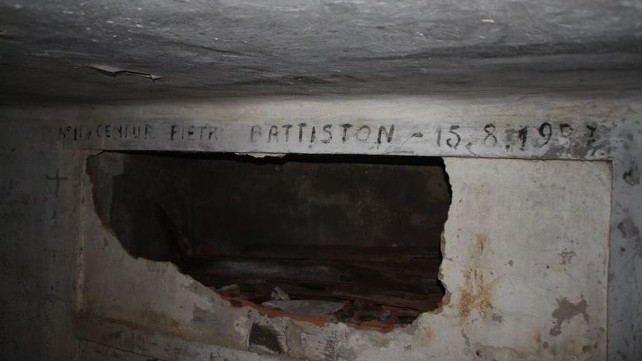
The main reason behind its construction was to bury the Italian soldiers with a grand inaugural ceremony led by the Foreign Minister and Mussolini's son-in-law at the site. Today the niches are still present in the pyramid with the plaques of the names of the deceased who occupied the place even though they are empty.
 2
Like
Published at 11:00 PM Comments (0)
2
Like
Published at 11:00 PM Comments (0)
Pou Clar - A natural pool well worth visiting
Friday, June 20, 2025
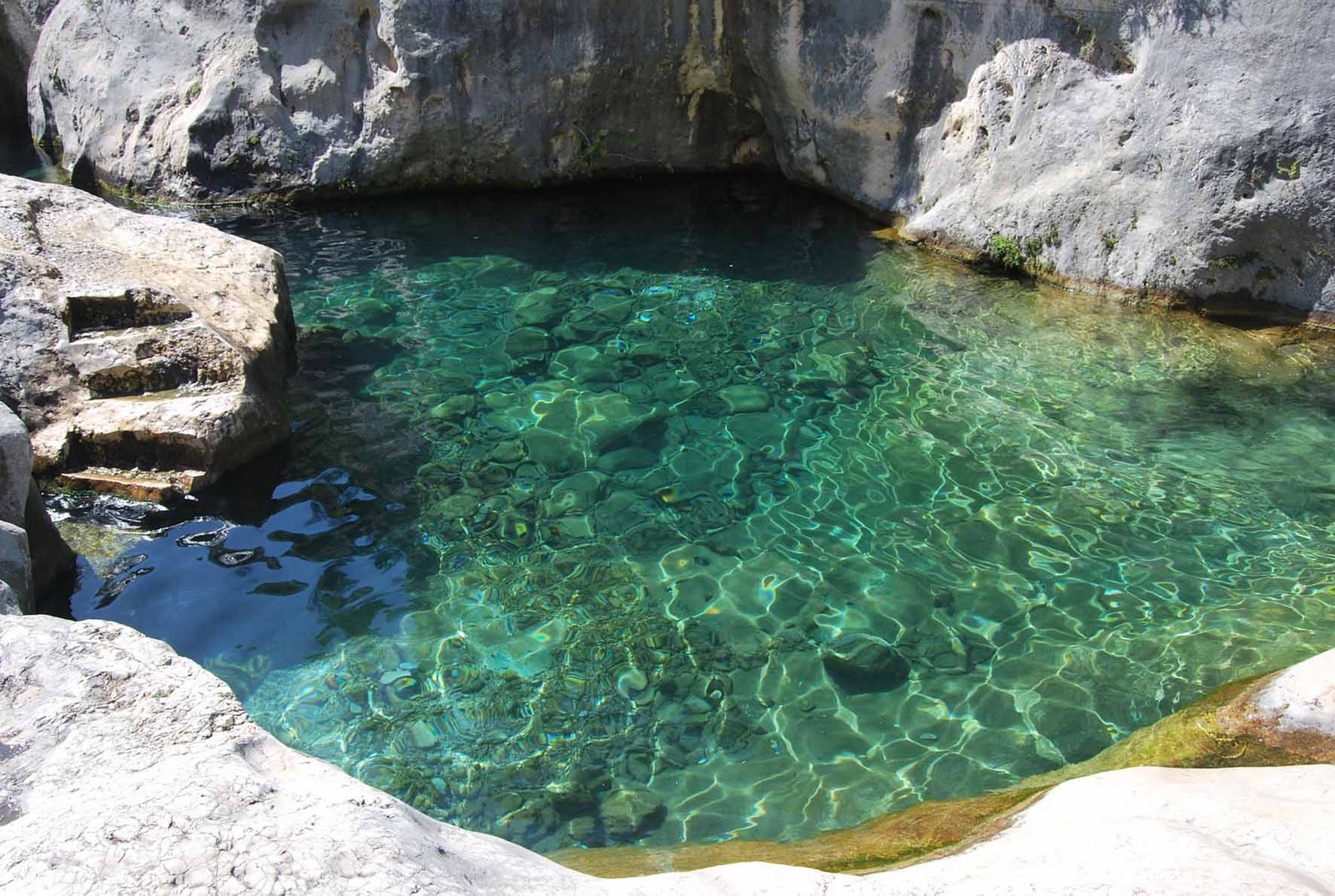
Summer is here and it's time to enjoy this wonderful natural enclave if you happen to be in the area...
The Pou Clar, is the most important river section Ontinyent has, and is of great value, as much for the landscape, as for the wildlife it supports. The river Clariano has its source here and the first section of its course is marked by a series of pools and waterfalls, which have all been sculpted by the water and go to make up an attractive area, much used by the local people. Over the generations, each pool has acquired a name; The Pool of Slaves, The Clear Pool, The Frozen Pool, The Side Pool, The Dark Pool and finally The Pool of Horses. There is easy access to the Pozo Claro and the visitor can walk along the whole section, as they enjoy the contrasts of colour in the rock formations and water and maybe take a refreshing summer swim in the pools.
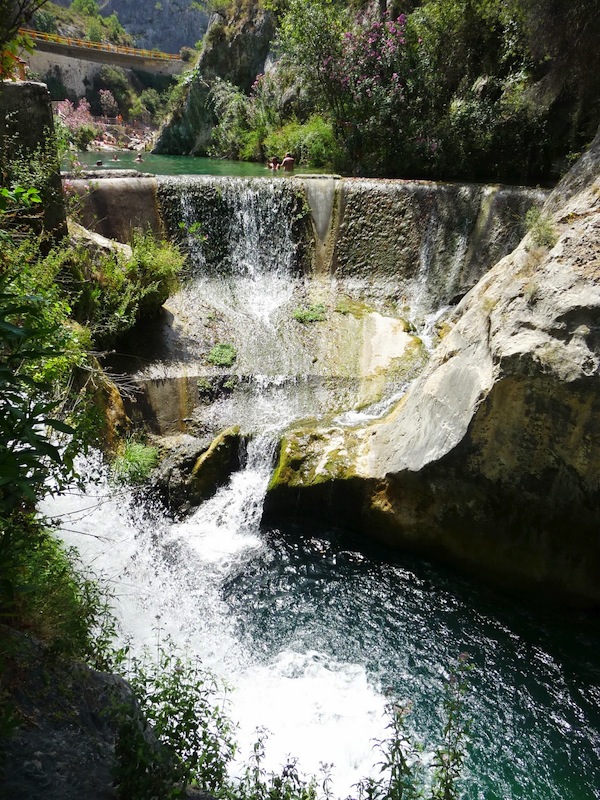
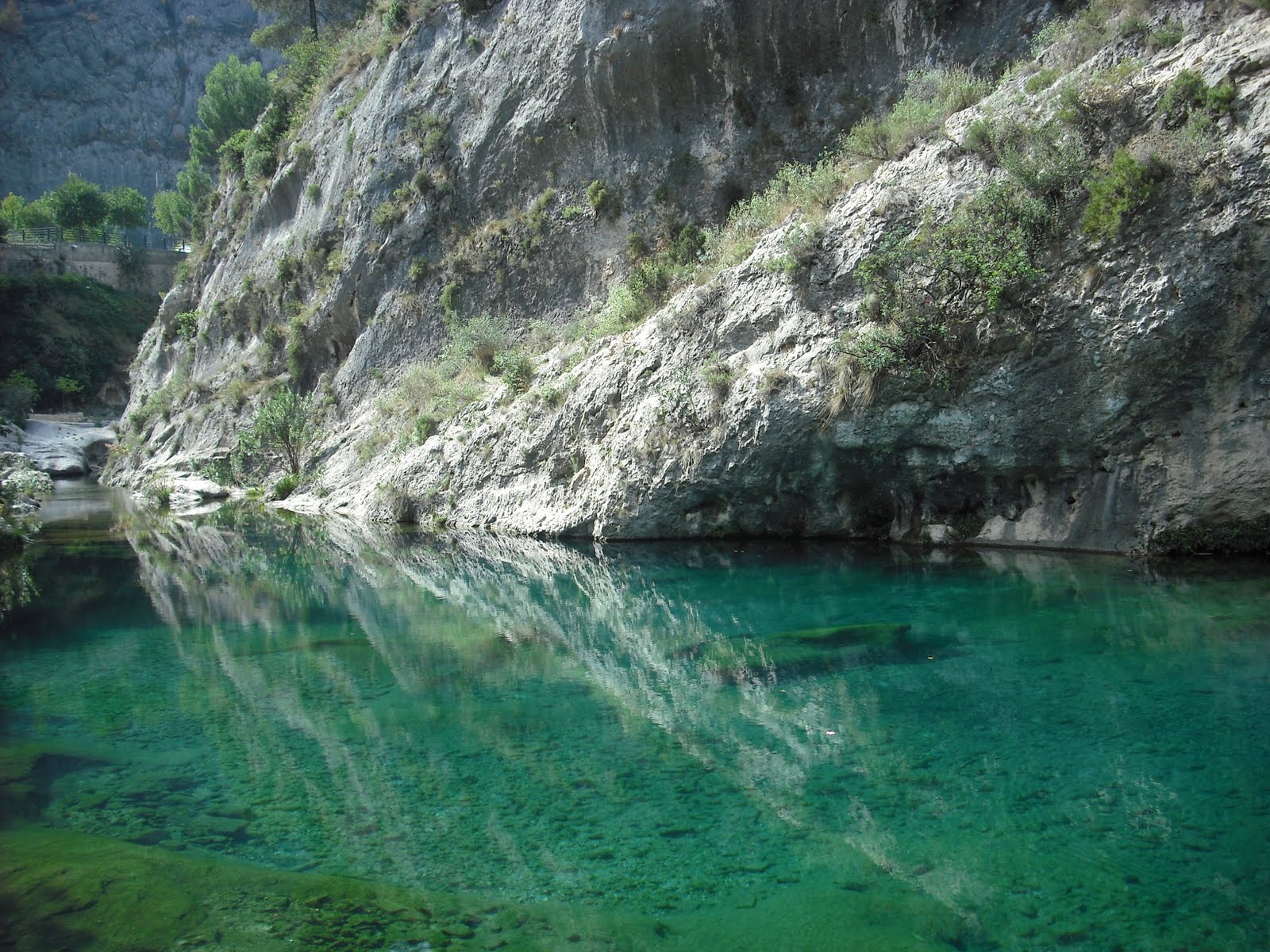
How to get there from Ontinyent:
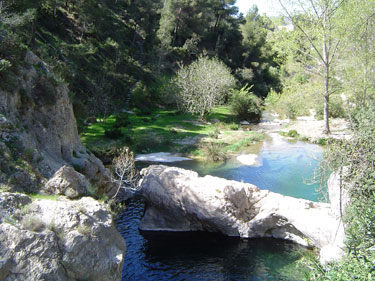 • On foot or by bike. Take the Camino del Llombo which comes out onto the Western bypass and continue until you come to the old Alba factory. Turn right here and pick up the Alba track which takes you past the house of the same name. Follow the track amongst the trees and through the ravine until you come out at the Pou Clar. The route is not marked. • On foot or by bike. Take the Camino del Llombo which comes out onto the Western bypass and continue until you come to the old Alba factory. Turn right here and pick up the Alba track which takes you past the house of the same name. Follow the track amongst the trees and through the ravine until you come out at the Pou Clar. The route is not marked.
• By car. Take the CV-81 Ontinyent-Bocairent road and at the crossroads for Fontanars, turn right and park. Access to the Pou Clar is in front of the car park.
The area is very near (about 500 meters) to the beginning of a footpath PR V-121 which eventually leads to Bocairent (about an hour). This footpath also takes us to Vullgam surrounded by mills, trees and the distant murmur of water in the Barranco de Los Naranjos.
In the opposite direction and starting from the last pool, walk down a stairway and you come to a picnic area under pine trees. Well worth a visit.
 0
Like
Published at 10:26 PM Comments (0)
0
Like
Published at 10:26 PM Comments (0)
La Palma - Spectacular!
Friday, June 13, 2025
The volcanic island of La Palma seems to be painted green due to a deep shroud of a prehistoric forest. Connect with nature under some of the world's clearest skies, relax on its welcoming beaches or hike through deep gorges and past volcanoes.
La Palma is the Canary island that was a finalist in the EDEN programme (European Destinations of Excellence) of the European Commission, in recognition of its sustainable tourism offer. This destination has been declared a Biosphere Reserve by UNESCO for its numerous protected natural spaces considered ecological treasures. These are places that you cannot miss if you decide to visit the area.
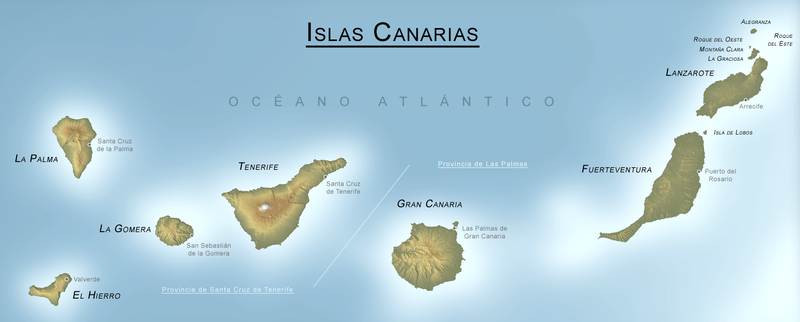
Also known as the “Isla Bonita’’, La Palma is the greenest spot in the whole of the Canary archipelago. If you are a nature lover and you have a bit of an adventurous spirit, you will really feel at home here. You will be able to enjoy a genuine natural museum, whether you are with your partner, family or friends.
La Palma's trails take you past waterfalls and up to the island's peaks. Once you reach the top, look up. The night sky is unforgettable. Clear skies and strict light pollution laws mean that La Palma is such a fantastic place for star gazing and astronomy that is has earned a Starlight award.
The advantage of visiting this little piece of the Atlantic is that it offers an attractive balance, both on the coast and in the mountains. Here you will be able to lose yourself in the lush forests and appreciate the steep surfaces, which will take you to beaches of gleaming, black sand where you can walk and relax.
A good way to start is to enter into the heart of La Palma where you will find the Caldera de Taburiente National Park, an underwater crater created by eruptions and erosion, a real visual spectacle that is well worth your attention.
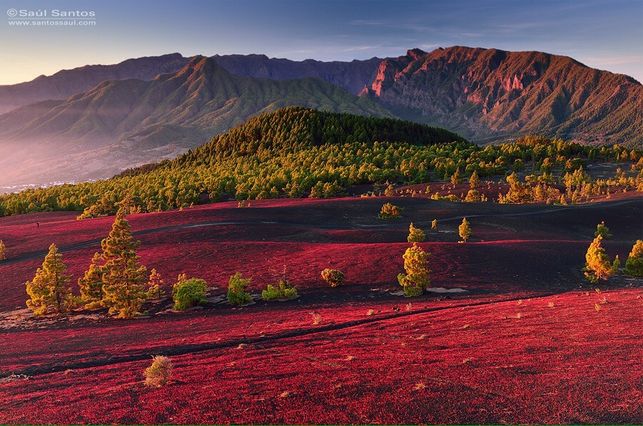
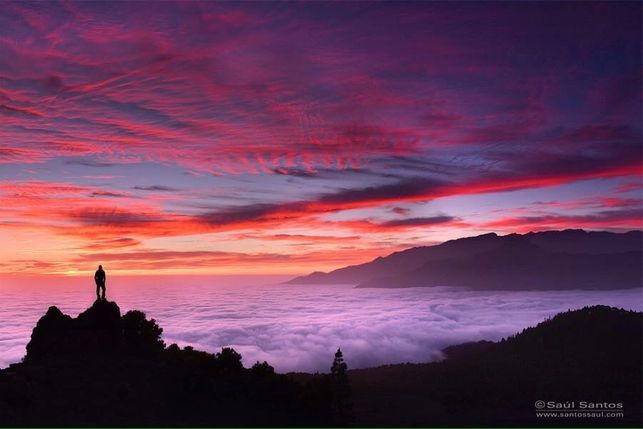
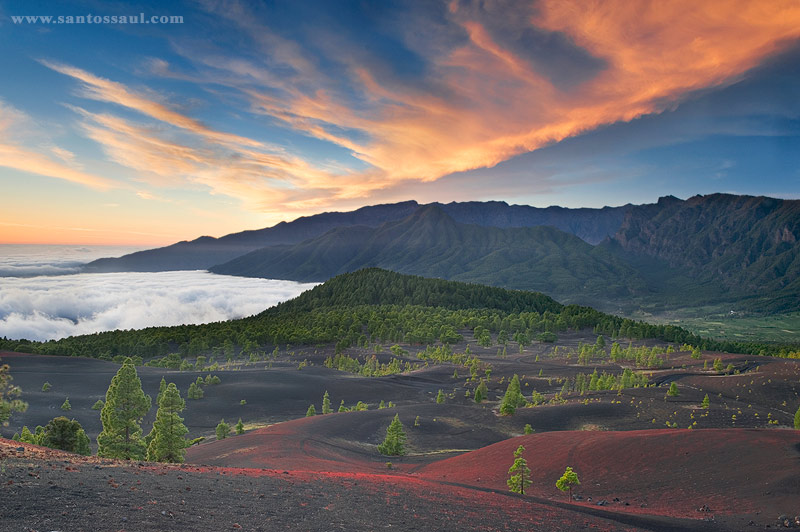
[Photographs by Saul Santos @ www.santossaul.com http://www.santossaul.com]
If what you want is to reach the clouds you can travel along high mountain ranges, including Roque de los Muchachos, which boasts one of the most modern astrophysical observatories in the world. A great idea for looking at the stars from a height.
When you have finished exploring inside, you can go to the coast to enjoy the shoreline, whose entire shape has been moulded at the whim of the volcanic lava coming from the great volcanic chain of Cumbre Vieja. Once there you only need to worry about inhaling the sea breeze and admiring the precipitous landscape dotted with small coves and cliffs.
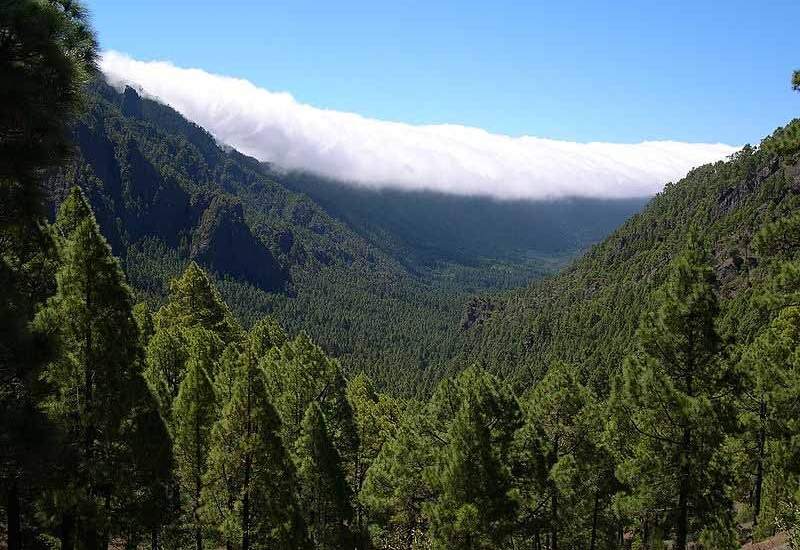
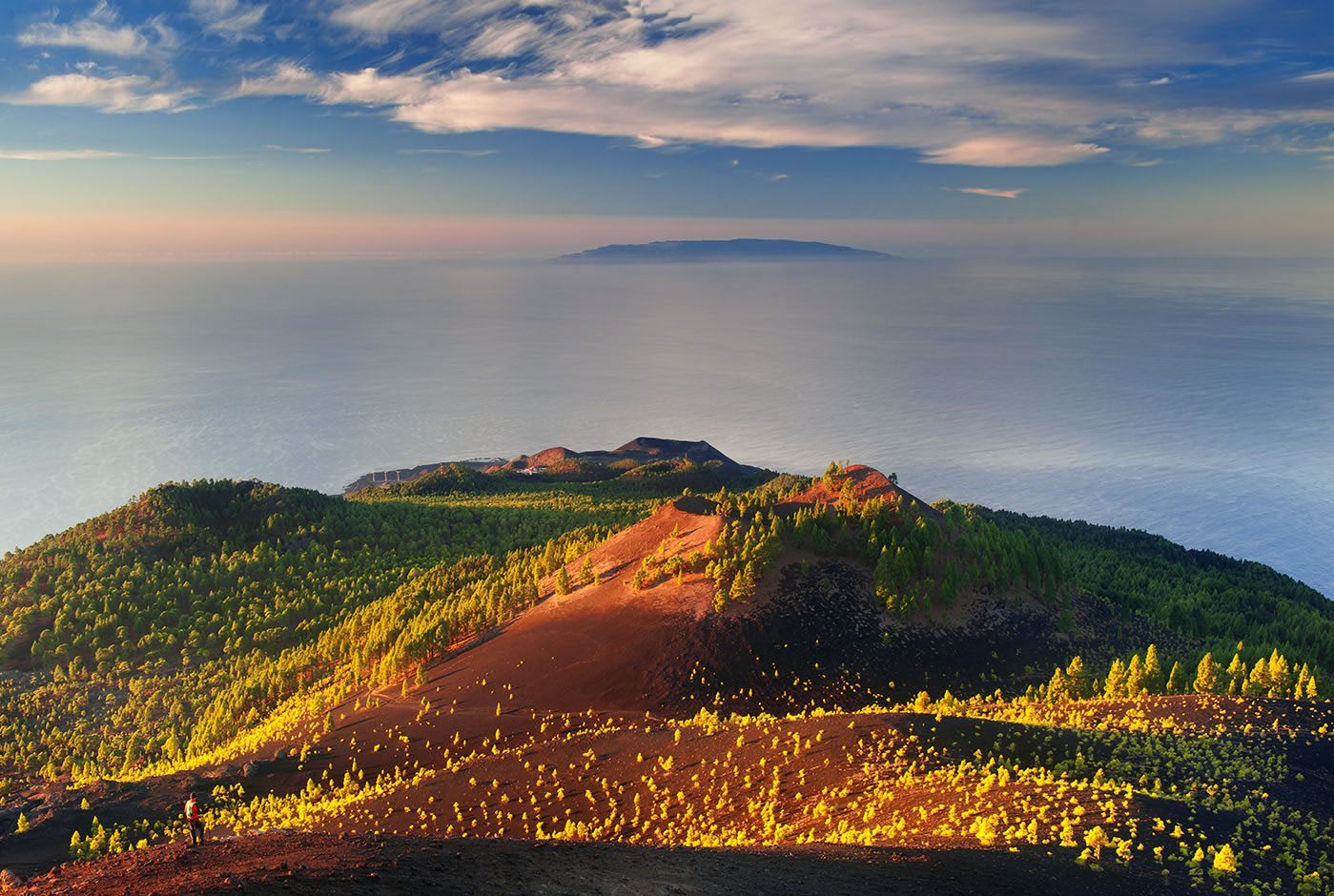
The art of this island not only resides in nature, but you can also find it in the numerous places of archaeological interest, hermitages, churches and museums. In particular, you must not to miss the historical site of Santa Cruz de La Palma.
Once you have arrived, you can learn about its island culture and the traditions such as “The Indianos in Carnival’’ and the Fiestas Lustrales festival, also known as the Bajada de la Virgen de las Nieves, which is celebrated every five years.
If you plan your visit during the first fortnight in July, you will be able to live the Semana Grande (Big Week) and the Semana Chica (Small Week), full of events and festivities. Worth a special mention is the Danza de Los Enanos (The Dance of the Dwarves), a deeply rooted tradition which will be repeated with a new edition in 2015.
You must not forget about the textile crafts, the cigar-making and the island's cuisine. The homemade desserts and cheeses play a special role in the island's extensive offer. In this way, you will be able to experience the richness of the island’s traditions for yourself.
All this with an average yearly temperature of between 16 and 21 degrees centigrade, which enables you to make the trip and enjoy the activities at any time of the year.
 1
Like
Published at 11:42 PM Comments (0)
1
Like
Published at 11:42 PM Comments (0)
Europe's Highest Capital
Friday, June 6, 2025
Nestled high in the Pyrenees, a unique gem awaits travellers seeking something truly different. Forget bustling metropolises and sprawling transport hubs; Andorra la Vella, the capital of the Principality of Andorra, offers a refreshingly distinct experience. What makes it so special? For starters, it holds the impressive title of Europe's highest capital city, perched at an elevation of 1,023 metres (3,356 feet) above sea level. This lofty position isn't just a fun fact; it shapes the very essence of the city and the country it governs.

Andorra itself is a fascinating anomaly. This microstate, roughly twice the size of the Isle of Wight, is co-governed by the President of France and the Bishop of Urgell in Spain, a unique co-principality arrangement that dates back centuries. Despite its small size, Andorra boasts a surprising population for its terrain, estimated to be around 86,000 residents, with a significant portion of them calling Andorra la Vella home.
The journey to Andorra la Vella is an adventure in itself. Because of its mountainous terrain, the country has no airport and no train lines. This isn't a drawback, but rather an integral part of its charm. Reaching the capital typically involves a picturesque drive through winding mountain roads, often from Toulouse in France or Barcelona in Spain. These routes, while sometimes challenging in winter, offer breathtaking vistas that serve as a magnificent prelude to the destination. It’s a journey that rewards patience with unparalleled natural beauty.
While Andorra is renowned for its world-class skiing and snowboarding, attracting hordes of winter sports enthusiasts to resorts like Grandvalira and Vallnord, the country and its capital offer much more than just snow-covered slopes. The allure extends far beyond the winter months, making it an appealing destination year-round.
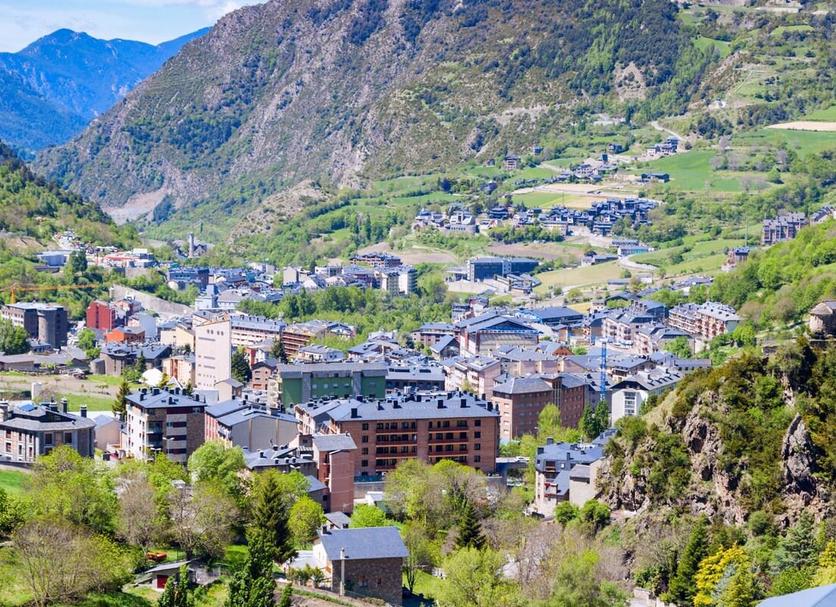
During spring and summer, the rugged landscapes transform into a hiker’s paradise. Lush green valleys, crystal-clear mountain streams, and an abundance of walking trails cater to all levels of experience. From gentle strolls to challenging climbs, the natural beauty of the Pyrenees is truly captivating. The air is crisp and clean, offering a welcome respite from the hustle and bustle of city life elsewhere.
Andorra la Vella itself might not boast the grand boulevards or historic architectural marvels of some other European capitals. Its charm lies elsewhere – in its unique blend of traditional mountain life and modern amenities, all framed by stunning natural backdrops. The city centre is a bustling hub, with a vibrant main street, Avinguda Meritxell, that’s a haven for shoppers.

Shopping in Andorra la Vella is a significant draw, largely due to the country's duty-free status. Visitors can find a wide array of goods, from electronics and perfumes to fashion and tobacco, often at competitive prices. This economic model has certainly shaped the city's commercial landscape, contributing to its lively atmosphere.
Beyond the retail therapy, the city offers cultural insights. The Casa de la Vall, a historic house that once served as the parliament of Andorra, provides a glimpse into the country's unique political heritage. Its stone walls tell tales of centuries of self-governance in this remarkable microstate.
Another highlight is the Caldea Spa, an architectural marvel and one of Europe’s largest thermal spas. Its distinctive glass pyramid structure dominates the skyline, offering a sanctuary of relaxation with its warm, mineral-rich waters. It’s a testament to how Andorra la Vella blends its natural resources with modern well-being experiences.
Living in Andorra la Vella, or indeed anywhere in Andorra, comes with its own set of characteristics. The tight-knit community, the slower pace of life compared to larger European cities, and the omnipresent mountain scenery create a distinct lifestyle. The absence of an airport or extensive rail network means that travel in and out of the country relies heavily on road transport, which locals and visitors alike have adapted to. The journey, rather than being a hindrance, becomes an intrinsic part of the Andorran experience, allowing for a gradual immersion into its unique environment.

The quality of life is often cited as a significant draw. The clean air, low crime rates, and emphasis on outdoor living contribute to a generally high standard of living. For those who embrace the mountain lifestyle and appreciate a strong sense of community, Andorra la Vella offers an appealing prospect.
Andorra la Vella truly stands apart. It’s a capital city that defies conventional expectations, offering an experience that is both exhilarating and remarkably serene. Its high altitude, lack of major transport links, and stunning natural surroundings all contribute to an atmosphere of exclusivity and adventure. Whether you're drawn by the promise of pristine ski slopes, invigorating mountain hikes, duty-free shopping, or simply the allure of discovering one of Europe's most intriguing microstates, Andorra la Vella promises an unforgettable escape into the heart of the Pyrenees. It’s a place where the journey is as memorable as the destination, and where the mountains truly shape the rhythm of life.
 2
Like
Published at 8:18 PM Comments (0)
2
Like
Published at 8:18 PM Comments (0)
Spam post or Abuse? Please let us know
|
|